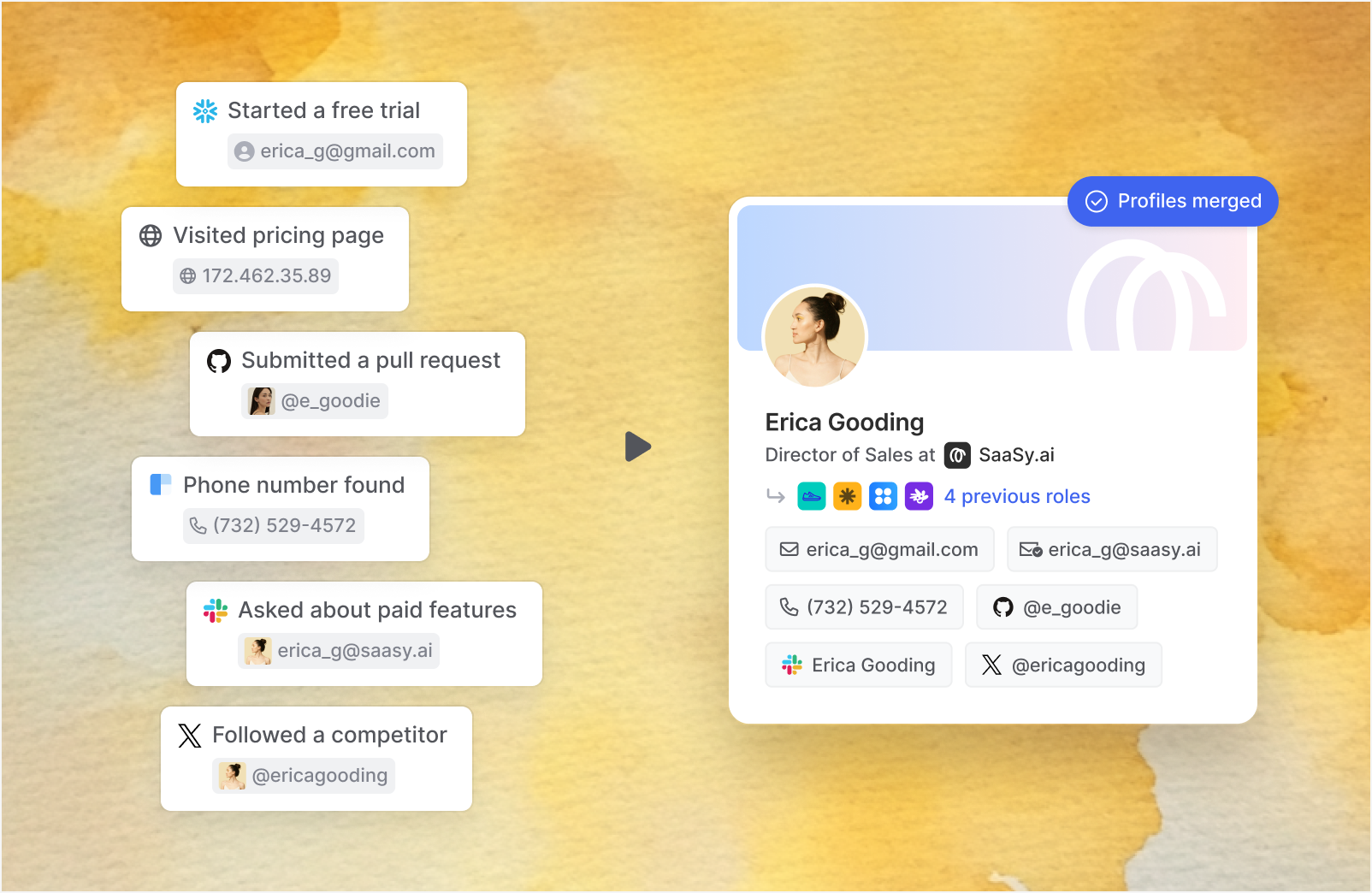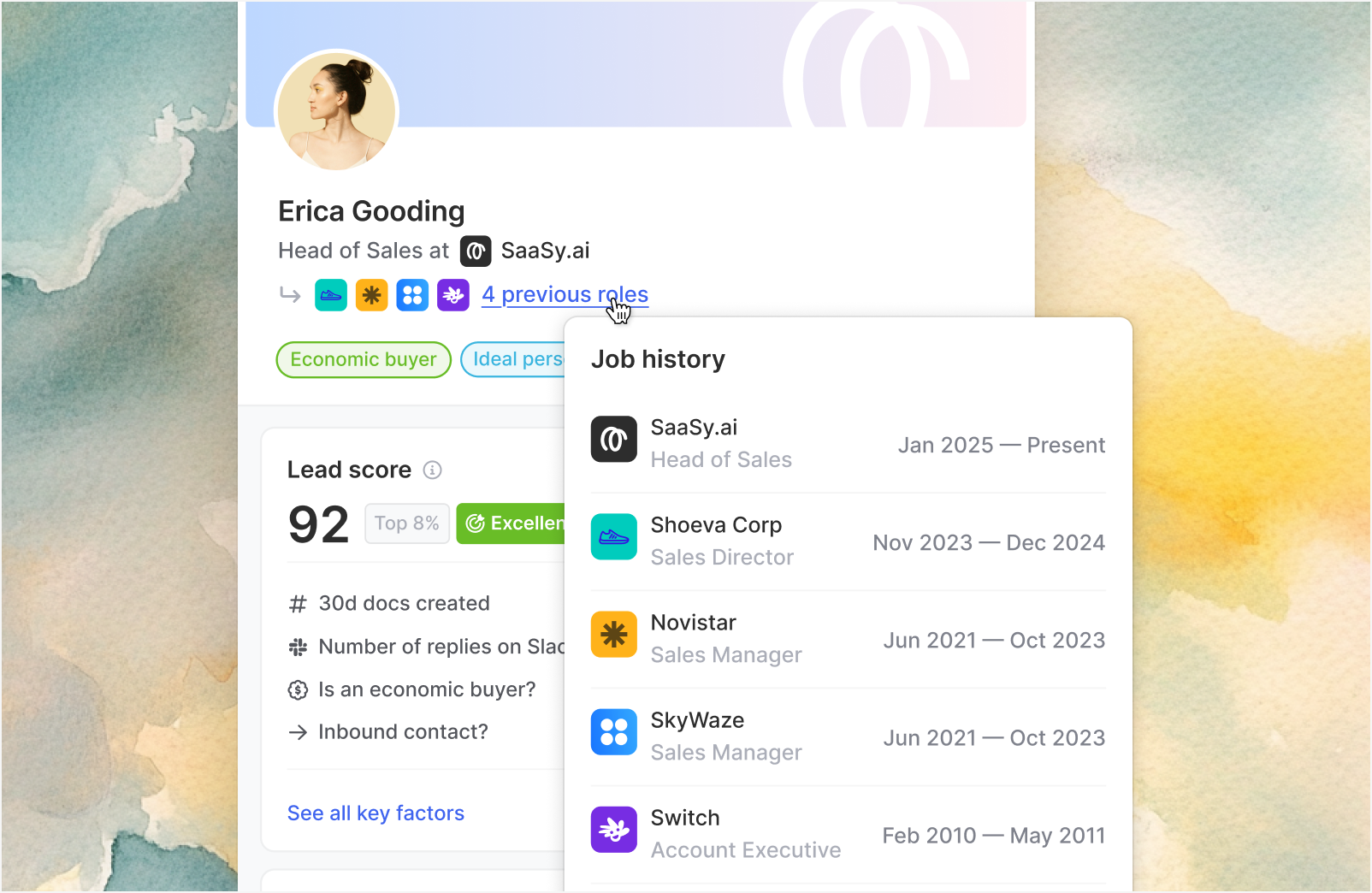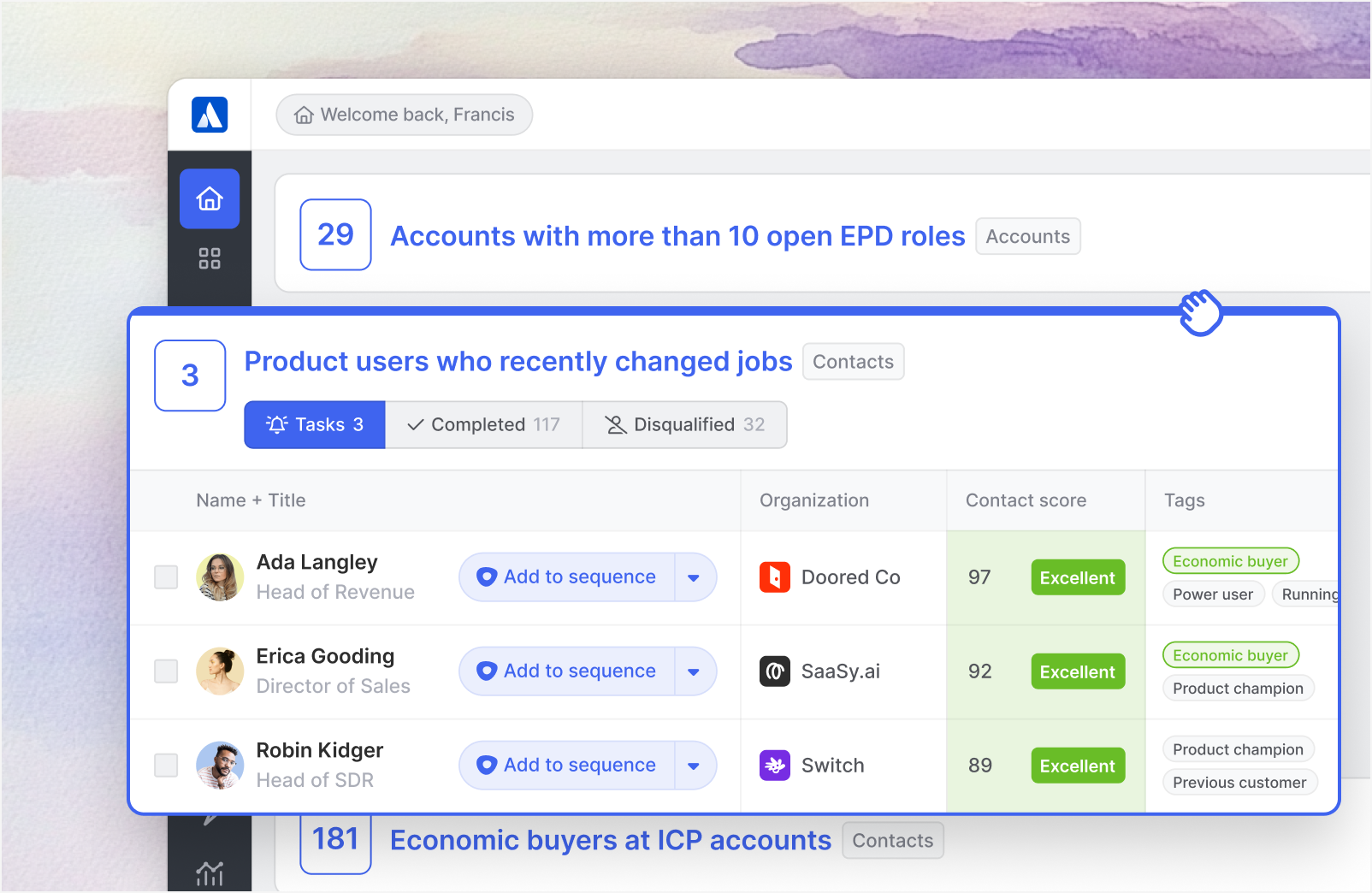
How Superhuman put the power of AI into the hands of reps to 2.5x meetings booked
“Common Room has transformed our GTM operations by providing a flexible platform that seamlessly integrates with our proprietary ML data models.”

Jeff Bedford
Direct of Marketing Operations
Business model
- Product-led
- Sales-led
- Enterprise
Teams
- Ops
- BDRs
- AEs
- Marketing
Use cases
- Unified customer view
- Lead and account scoring
- Account-based sales
- GTM workbench
- Workflow automation
Key signals
Turn buyer intelligence into pipeline with AI.
Request demoAI is transforming how companies go to market, giving teams across operations, sales, and marketing superpowers to solve real-world problems and drive real-world results. That’s why organizations like Superhuman (formerly Grammarly ) aren’t just exploring GTM AI—they’re partnering with platforms like Common Room to deploy it at scale.
What customer say

“We were spending anywhere from 4 to 6 hours per week just on contact creation across Sales Nav, ZoomInfo, and our own database. That’s time that we've given back to the team with Common Room.”

Riley Harbour
Head of Business Development

“What our teams value most is the action layer. Rather than cobbling together insights from many different tools, they now have everything they need in one workspace, saving reps valuable time and opening new doors to pipeline generation.”

Jeff Bedford
Direct of Marketing Operations

“The pre-Common Room time was a bit of choose-your-own-adventure. Now we're in a place where we have that recipe to help every rep consistently hit quota.”

Riley Harbour
Head of Business Development
Background
Here’s how Superhuman used Common Room to:
- Enhance and implement internal AI models for reps in the field
- Eliminate manual workflows with AI automation
- More than double meetings booked
Replace manual workflows with AI automation
As a popular product-led company with a sales-led motion for enterprise deals, Superhuman's BDRs and AEs were constantly on the hunt for data and signals that could help them prioritize accounts and personalize outreach for the right buying committee members.
Much of this work happened in Tableau dashboards, where reps would switch between reports in search of product usage data.
The process was manual and required multiple tools to get a sales flow up and running—and the insights stopped at product activity.
Leaders from across the operations, sales, marketing, and data teams—including Director of Marketing Operations Jeff Bedford and Head of Business Development Riley Harbour—set out to transform Superhuman's pipegen motion via an AI propensity model.
The goal was to give time back to go-to-market teams by helping them identify the right contacts to outreach.
The next step was enhancing the model and making it actionable for reps in the field.
Superhuman explored tools like Pocus and Clay, but Common Room’s customizability and UI action layer set it apart.

“Common Room has transformed our GTM operations by providing a flexible platform that seamlessly integrates with our proprietary ML data models,” Jeff said.
Reps get a 360-degree view of accounts served up in a unified profile featuring key information.

This makes it easy for reps to rapidly get up to speed on each account and accelerate both prioritization and personalization.
“We were spending anywhere from 4 to 6 hours per week just on contact creation across Sales Nav, ZoomInfo, and our own database,” Riley said. “That’s time that we've given back to the team with Common Room.”
Common Room’s sales workbench enables reps to action on accounts without ever switching screens—they can send or sequence directly from any contact- or account-level view.

“What our teams value most is the action layer,” Jeff said. “Rather than cobbling together insights from many different tools, they now have everything they need in one workspace, saving reps valuable time and opening new doors to pipeline generation.”
Results
Since rolling out the model and Common Room, Superhuman has seen a 50% increase in reply rates and a 35% decrease in lead-to-opportunity time compared to traditional outbound processes.
Additionally, AI-recommended contacts in Common Room have a 2.5x rate of meetings booked compared to cold outbound contacts.
On average, outreach to these contacts leads to 2.4x more closed-won pipeline.
With Superhuman's acquisition of Coda, and the integration of the two companies’ product roadmaps to build the productivity platform for agents and apps, the team is excited to keep evolving its approach to signal-led, AI-first GTM.
“The pre-Common Room time was a bit of choose-your-own-adventure,” Riley said. “Now we're in a place where we have that recipe to help every rep consistently hit quota.”
Superhuman is the trusted AI assistant for communication and productivity. Common Room is Superhuman's trusted AI platform for pipegen.
Turn GTM into an AI science with Common Room
We think you'd like these
How Airbyte built a warm outbound motion to 2x its year-over-year pipeline growth rate
2x+ YoY pipeline growth rate
See how Airbyte used Common Room to exceed its annual pipeline targets in half the time.Read full storyHow incident.io upgraded from legacy prospecting tools to boost pipegen performance
2x faster pipegen
See how incident.io used Common Room to generate more meetings booked in much less time.Read full storyHow Homebot used AI agents to generate $1.5M in new pipeline in a single month
250% ROI
See how Homebot used Common Room to generate $1.5 million in new pipeline in one month.Read full story
